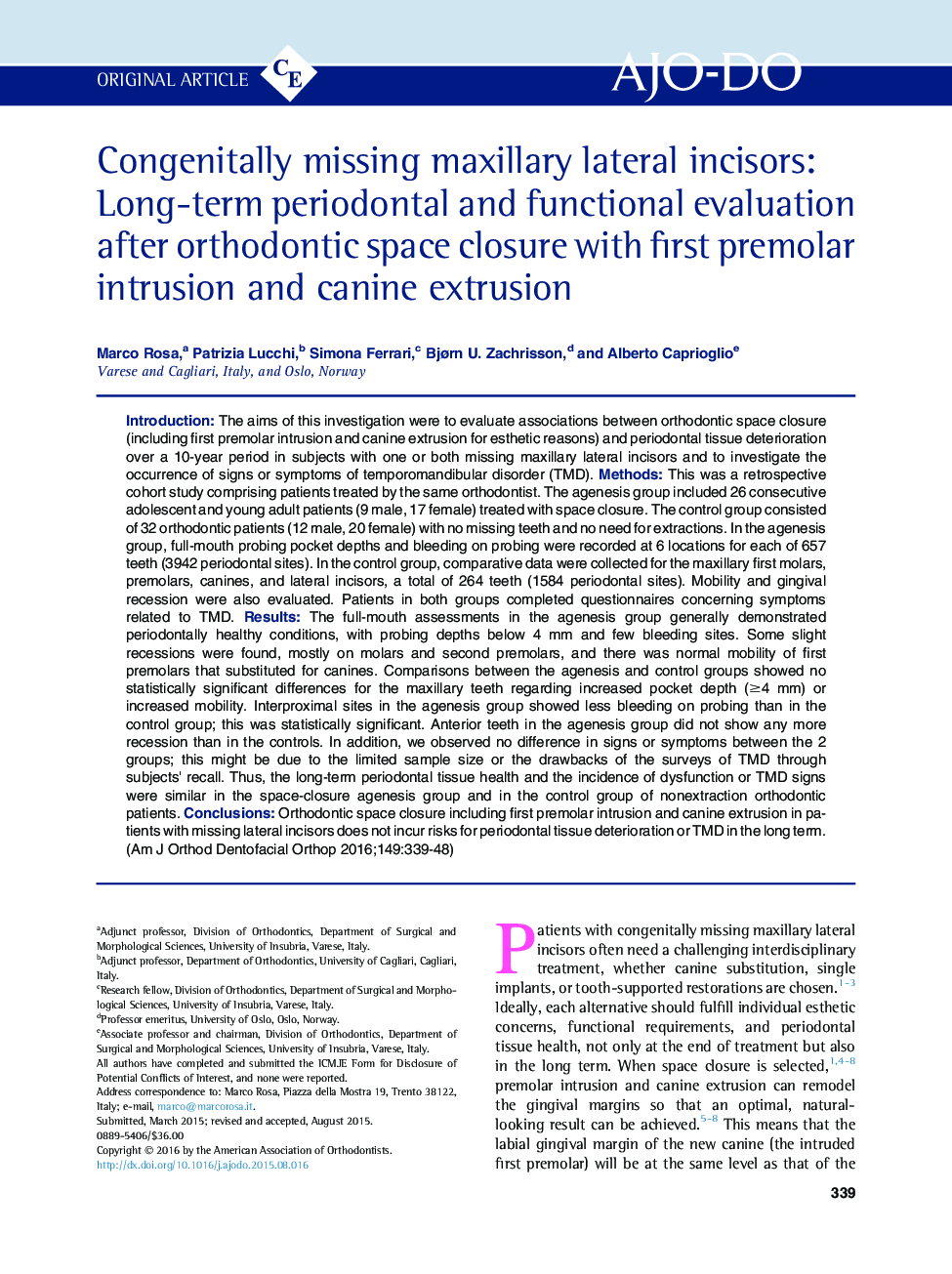| Article ID | Journal | Published Year | Pages | File Type |
|---|---|---|---|---|
| 3115509 | American Journal of Orthodontics and Dentofacial Orthopedics | 2016 | 10 Pages |
•We studied periodontal health after treatment for missing maxillary lateral incisors.•Canine substitution was compared with a matched control group with no agenesis.•No statistical differences between groups were found for periodontal health or temporomandibular disorder.•The long-term periodontal status of intruded first premolars was good.
IntroductionThe aims of this investigation were to evaluate associations between orthodontic space closure (including first premolar intrusion and canine extrusion for esthetic reasons) and periodontal tissue deterioration over a 10-year period in subjects with one or both missing maxillary lateral incisors and to investigate the occurrence of signs or symptoms of temporomandibular disorder (TMD).MethodsThis was a retrospective cohort study comprising patients treated by the same orthodontist. The agenesis group included 26 consecutive adolescent and young adult patients (9 male, 17 female) treated with space closure. The control group consisted of 32 orthodontic patients (12 male, 20 female) with no missing teeth and no need for extractions. In the agenesis group, full-mouth probing pocket depths and bleeding on probing were recorded at 6 locations for each of 657 teeth (3942 periodontal sites). In the control group, comparative data were collected for the maxillary first molars, premolars, canines, and lateral incisors, a total of 264 teeth (1584 periodontal sites). Mobility and gingival recession were also evaluated. Patients in both groups completed questionnaires concerning symptoms related to TMD.ResultsThe full-mouth assessments in the agenesis group generally demonstrated periodontally healthy conditions, with probing depths below 4 mm and few bleeding sites. Some slight recessions were found, mostly on molars and second premolars, and there was normal mobility of first premolars that substituted for canines. Comparisons between the agenesis and control groups showed no statistically significant differences for the maxillary teeth regarding increased pocket depth (≥4 mm) or increased mobility. Interproximal sites in the agenesis group showed less bleeding on probing than in the control group; this was statistically significant. Anterior teeth in the agenesis group did not show any more recession than in the controls. In addition, we observed no difference in signs or symptoms between the 2 groups; this might be due to the limited sample size or the drawbacks of the surveys of TMD through subjects' recall. Thus, the long-term periodontal tissue health and the incidence of dysfunction or TMD signs were similar in the space-closure agenesis group and in the control group of nonextraction orthodontic patients.ConclusionsOrthodontic space closure including first premolar intrusion and canine extrusion in patients with missing lateral incisors does not incur risks for periodontal tissue deterioration or TMD in the long term.
